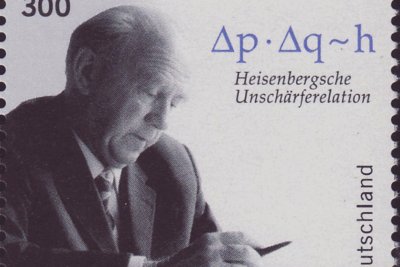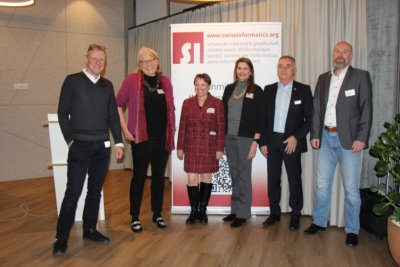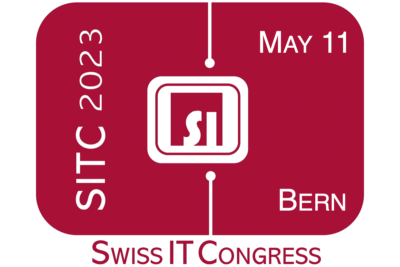The textual scholar and literary critic Jerome McGann begins his most recent book with the following: “Here is surely a truth now universally acknowledged: that the whole of our cultural inheritance has to be recurated and reedited in digital forms and institutional structures.”[1] McGann emphasizes the enormous consequences of this acknowledged truth. The whole of our cultural inheritance is being produced again as simulacra meant to stand for the people, objects, and ideas we care enough about to make available again. The perils and opportunities presented by digital reproductions are suggested by the word reproduction—productions that are produced again.
That we can repeat the cultural productions we have received in places and times both distant and near suggests the opportunities promised by our new technologies. The process and procedures of reproduction also manifest the dangers that can be associated with attempting to reproduce what has been received. We learn through childhood games such as “telephone,” where the aim is to have short, whispered phrase repeated exactly from person to person gathered in a room, that repetition is paradoxically generative, creative. We learn this lessen again later as bibliographers and computer scientists. The phrase uttered by the first player is never the same as what is uttered to the last. The facsimile, no matter how meticulously made, is not the original. The message at the information source is not the same as the message received at its destination, even in Claude Shannon’s famous mathematical theory of communication. But we gain much through our reproductive efforts—more efficient communication, a useful substitute for the rare book that must remain locked away for its own safety, and the joy of whispering into each other’s ears.
To acknowledge the universal truth that we are busy reproducing the whole our cultural inheritances in digital forms is also to acknowledge that we are remaking those inheritances. Recognizing this, we are positioned to consider the question of how we might wish to remake what we have received. Given that we have so industriously begun our work, we can become more aware of the many mechanisms that aid and constrain our work. If we are to take advantage of the promises present by digital technologies and avoid their dangers, an awareness of their mechanisms is crucial. Since to copy is to create, an awareness of the mechanisms we use to reproduce what we have received as culture enables us to think carefully about what we might wish to create with what we have inherited.
“Awareness of the Mechanism,” an exhibit featured at ETH Zurich in September 2021, aims to foster an awareness of how we are remaking our cultural inheritances by revealing the generative potentials, both positive and negative, of the digital technologies we use to reproduce them. As the media and literary theorist Matthew Kirschenbaum has suggested, many believe digital documents to be immaterial in the base sense of lacking material substance, even if they acknowledge the culture and political force that digital documents can exert. Kirschenbaum made this assertion more than a decade ago. But arguably many still think that digital documents are somehow only abstractions.[2] We may not be surprised that the materiality of digital documents and the mechanisms that produce them are frequently misunderstood by those that are not computer or information scientists. But arguably digital documentarity, which is to say after Ron Day, the powers by which digital documents are brought into presence and made evident, [3] is also misunderstood by scientists that do not consider the complex individual and cultural mechanisms that contribute to the materialization of digital documents. Aware of their mechanisms or not, those that study or simply make use of digital documents are rarely, if ever, able to feel them as the solid things they are.
To suggest the material weight of digital documents, “Awareness of the Mechanism” presents material reproductions of abstractions used to constitute digital text. It focuses specifically on digital textuality and the abstractions of a widely used encoding standard for textual data. As part of an ongoing effort to dispel the widely held belief that digital texts lack materiality and raise awareness about the cultural significance of the mechanisms that produce their substance, the exhibition presents sculpture that lends material heft to some of the abstractions that help to constitute digital text. Each sculpture represents some of the abstractions used to recreate Korean songs and poems as digital documents. As felt, solid objects they aim to enable an awareness of the mechanisms that constitute digital materiality. As a statement about the generative, creative nature of digital reproduction, the figures mean to say something about the creative opportunities digital technologies provide when we wish to make what is important us available to the future and its distances. We can look at our cultures in entirely new ways.
At the same time, the objects are also meant to be cautionary tales about how radically our new technologies can cleave the present and future from the past. We would not want the sculptures presented her to be thought of as the poems that they represent. Too much of what the poems have been would be lost. The sculptures suggest the potentially catastrophic losses that can result when digital technologies are used to reproduce cultural objects and the reproductions are confused for what they represent. They also remind us about the inevitably of loss when we copy what we care about. Earnest worry about these losses, those that are inevitable and those that are potentially tragic, can be mitigated by the promise of a growing awareness of our digital mechanisms. This awareness, we can hope, will help us think better and more carefully about how we are making the gifts of our cultural inheritance available to the distant places and times we call the future.
“Hwang Jini’s ‘Green Hills and Blue Stream’” was created in 2019. It describes the Unicode code points used to represent an eighteenth-century manuscript version of a sijo (song lyric/ poem) by Hwang Jini, a sixteenth century gisaeng (female entertainer) from Korea’s Joseon dynasty (1392–1910). The eighteenth-century manuscript is the earliest extant version of Hwang’s sijo. Unicode is a widely used encoding standard that facilitates the creation and distribution of digital text. The Unicode standard does this by assigning numbers, so-called code points, to elements used in the world’s writing systems. The roughly 65,000 abstract code points of what is called the Basic Multilingual Plane of the Unicode standard were mapped to the surface of a sphere. To describe the weave of the network they create when facilitating a digital transcription of Hwang’s sijo, connections were drawn between the Unicode code points on the sphere needed to recreate Hwangs sijo as a digital text. The three-dimensional model created by this process was then 3D printed.
“Kim Sowol’s ‘Azaleas’” was initially created in 2015. The logic of its creation is like that of “Hwang Jini’s ‘Green Hills and Blue Stream.’” Indeed, the software created with Sanghun Kim to produce the models on display was initially created in 2015 while working with the poetry of Kim Sowol (1902–1934). “Kim Sowol’s ‘Azaleas’” describes the Unicode values used to represent the title poem of Azaleas, a canonical book modern Korean poetry by Kim. The book was initially printed in late 1925. Kim Sowol’s poetry is often described as “romantic” and “traditional.” Here too, the roughly 65,000 code points of what is called the Basic Multilingual Plane of the Unicode standard were mapped to the surface of a sphere. To describe the weave of the network they create when facilitating a digital transcription of Kim Sowol’s “Azaleas,” connections were drawn between the Unicode code points on the sphere needed to recreate Kim’s poem as a digital text. Once a three-dimensional model was created, it was 3D printed.

“Kim Sowol’s ‘Azaleas’” was initially created in 2015. The logic of its creation is like that of “Hwang Jini’s ‘Green Hills and Blue Stream.’” Indeed, the software created with Sanghun Kim to produce the models on display was initially created in 2015 while working with the poetry of Kim Sowol (1902–1934). “Kim Sowol’s ‘Azaleas’” describes the Unicode values used to represent the title poem of Azaleas, a canonical book modern Korean poetry by Kim. The book was initially printed in late 1925. Kim Sowol’s poetry is often described as “romantic” and “traditional.” Here too, the roughly 65,000 code points of what is called the Basic Multilingual Plane of the Unicode standard were mapped to the surface of a sphere. To describe the weave of the network they create when facilitating a digital transcription of Kim Sowol’s “Azaleas,” connections were drawn between the Unicode code points on the sphere needed to recreate Kim’s poem as a digital text. Once a three-dimensional model was created, it was 3D printed.

“Yi Sang’s ‘Poem No. 4’” combines several logical elements of the other representations on display. Initially created in 2018, it describes the Unicode values used to represent “Poem No. 4” by the Korean poet Yi Sang (1910–1937). “Poem No. 4” was printed initially in mid-1934 as part of a poetic series called “Crow’s Eye View.” Yi Sang’s poetry is often described as “modernist” and “avant-garde.” To describe the ordered relationships that Unicode values create when facilitating a digital transcription of Yi Sang’s printed poem, connections are drawn between sequentially located Unicode code points used to recreate Yi’s poem as a digital text. As with Kim Sowol’s poem, the result is a shape that looks like a tree. In contrast to our tree-like representation of the code used to present Kim Sowol’s poem, here every code point utilized to create a digital transcription of Yi’s poem is used to generate a tree-like shape. For example, a “tree” is drawn such that all the Unicode code points representing characters that precede 0 are drawn as “roots” and all the code points representing characters that appear following 0 in Yi Sang’s poem are drawn as “branches.” Another tree is drawn to represent the code points used to represent characters preceding and following 1. The result is something that looks like a forest. To create what looks like the landscape from which the forest grows, the roughly 65,000 code points of the Basic Multilingual Plane of the Unicode Standard were mapped to a plane in three-dimensional space. The technique is similar to mapping the Basic Multilingual Plane to the surface of a sphere. Here, however, the locations on the plane associated with code points used to create Yi Sang’s poem as a digital text rise along the z-dimension of the three-dimensional space according to how frequently they are needed to create a digital transcription of Yi’s poem. Because numerals are so frequently repeated in Yi Sang’s poem, one region of the plane rises high above the others.
Much more can be said about the histories of the Korean texts we reproduce and the mechanism by which they are reiterated as part of Korea’s cultural heritance, a cultural inheritance that digital technologies help make available far beyond the Korea’s historical or modern boundaries. More too can be said, of course, about the algorithms and software created to produce these shapes, as well as the 3D printing technologies used to create the sculptures on display. Each poem/ song is iconic in Korea’s cultural tradition. Each, in its own way, is something that has been cared for. This is clear because each has been copied repeatedly—in manuscript forms and by industrial presses, by professors professing and students studying for exams—and each time remade. It can be hoped that the objects made evident by “Awareness of the Mechanism” stand as examples of the diverse and creative ways that we can care for what we receive as cultural heritage, as well as the dangers and opportunities that attend our work to ensure what we care about. This exhibit makes use of examples from Korea, but the processes that make cultural inheritances evident to those that inherit them are hardly unique to Korea. By lending heft to the abstractions that formulate new forms of copying used widely around the world, the exhibition aspires to hint also at older recreations and their mechanisms as creations and processes worth conserving.
Matthew Kirschenbaum ends “Awareness of the Mechanism,” the introduction to his book Mechanisms by writing: “Product and process, artifact and event, forensic and formal, awareness of the mechanism modulates inscription and transmission through the singularity of a digital present.”[4] The ending of his introduction is a good place to end ours to “Awareness of the Mechanism.” How we modulate the inscription and transmission of what we have received as cultural inheritance is how we make these inheritances present again in the singular moments of the future.
_____
The App
For those interested in experiencing the data models in a three dimensions, a web app was developed which can be accessed by simply scanning in the QR code below with any smart phone or tablet. Once you enter the app, choose the model that you would like to view and follow the simple instructions. Information about the models, images of the manuscripts, and a short info-video of the artist talking about each of the works and the poems is also available in the app. The app has been provided by the Special Interest Groups Digital Arts & Technology and Digital Heritage of the Swiss Informatics Society.
_____
Notes
[1] Jerome McGann, A New Republic of Letters (Cambridge Massachusetts and London England: Harvard University Press, 2014), 1.
[2] See Matthew Kirschenbaum, Mechanisms: New Media and the Forensic Imagination (Cambridge Massachusetts and London England: MIT Press, 2008).
[3] See Ronald Day, Documentarity: Evidence, Ontology, and Inscription (Cambridge Massachusetts and London England: MIT Press, 2019).
[4] Kirschenbaum, Mechanisms, 23.
References
Kirschenbaum, Matthew. Mechanisms: New Media and the Forensic Imagination Cambridge Massachusetts and London England: MIT Press, 2008.
McGann, Jerome. A New Republic of Letters. Cambridge Massachusetts and London England: Harvard University Press, 2014
Day, Ronald. Documentarity: Evidence, Ontology, and Inscription. Cambridge Massachusetts and London England: MIT Press, 2019.
† Korean names and book titles have been Romanized to facilitate the easy discovery of more information about the people and books described.
_____
Wayne de Fremery is an Associate Professor in the School of Media, Arts, and Science at Sogang University in Seoul and Director of the Korea Text Initiative at the Cambridge Institute for the Study of Korea in Cambridge, Massachusetts (http://www.koreatext.org/). He also currently represents the Korean National Body at ISO as Convener of a working group on document description, processing languages, and semantic metadata (ISO/IEC JTC 1/SC 34 WG 9). Wayne’s research and art integrate approaches from literary studies, bibliography, and design, as well as information science and artificial intelligence. Recent articles and book chapters by Wayne have appeared in The Materiality of Reading (Aarhus University Press, 2020), The Wiley-Blackwell Companion to World Literature (Ken Seigneurie ed., 2020), and Library Hi-Tech (2020). Wayne’s bibliographical study of Chindallaekkot (Azaleas), a canonical book of modern Korean poetry, appeared in 2014 from Somyŏng Publishing. In 2011, his book-length translation of poetry by Jeongrye Choi, Instances, appeared from Parlor Press. Books designed and produced by Wayne have appeared from the Korea Institute at Harvard University, the University of Washington Press, and Tamal Vista Publications, an award-winning press he ran before joining the faculty of Sogang University. Some of his recent research projects have concerned the use of deep learning to improve Korean optical character recognition (funded by the National Library of Korea), technology and literary translation (paper forthcoming from Translation Review), and “copy theory” (paper under review). Wayne’s degrees are from Whitman College, Seoul National University, and Harvard.
Sanghun Kim is a Lead Research Engineer at Hyundai MnSoft where he builds high-definition maps and artificial intelligence solutions to support the development of autonomous vehicles. Sanghun is also a Fellow at the Cambridge Institute for the Study of Korea (CISK) in Cambridge, Massachusetts where he works on a variety of projects concerning the representation and analysis of texts and other cultural heritage objects. With CISK, he has developed systems for mapping and encoding large-scale textual image data, Geographical Information Systems that describe early twentieth-century literary production in Korea, as well as deep learning alternatives to traditional Optical Character Recognition (OCR) systems for the automated transcription of East Asian texts. His work at CISK has been funded by several institutions including the National Library of Korea, where he participated in a project to improve the library’s OCR systems, and Fo Guang Shan Temple in Taiwan, where he is working to automate the transcription of the massive Buddhist Canon in its many historical instantiations. Sanghun was instrumental in the conception and development of the systems used to create the models on display here as part of “Awareness of the Mechanism.”










